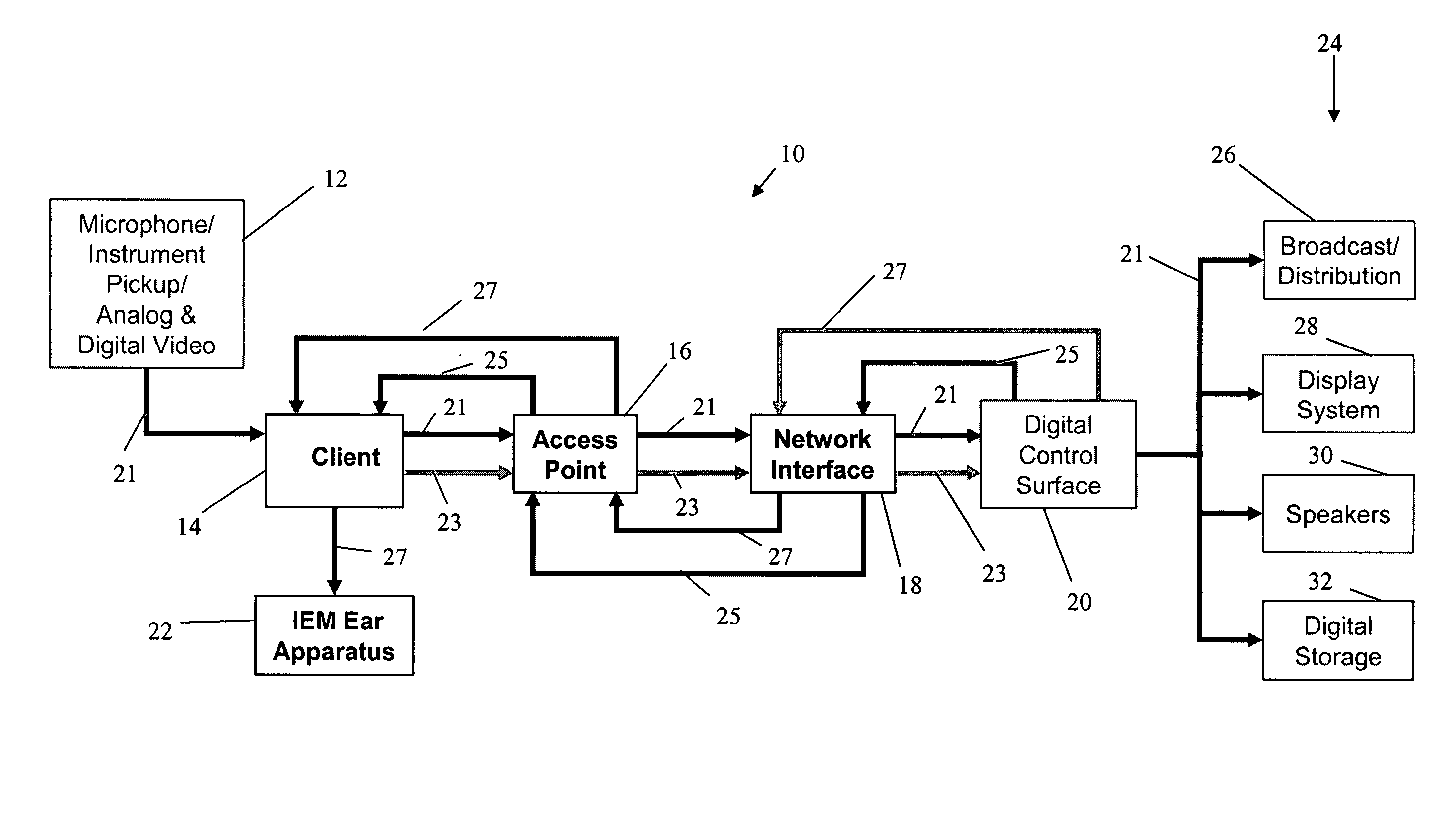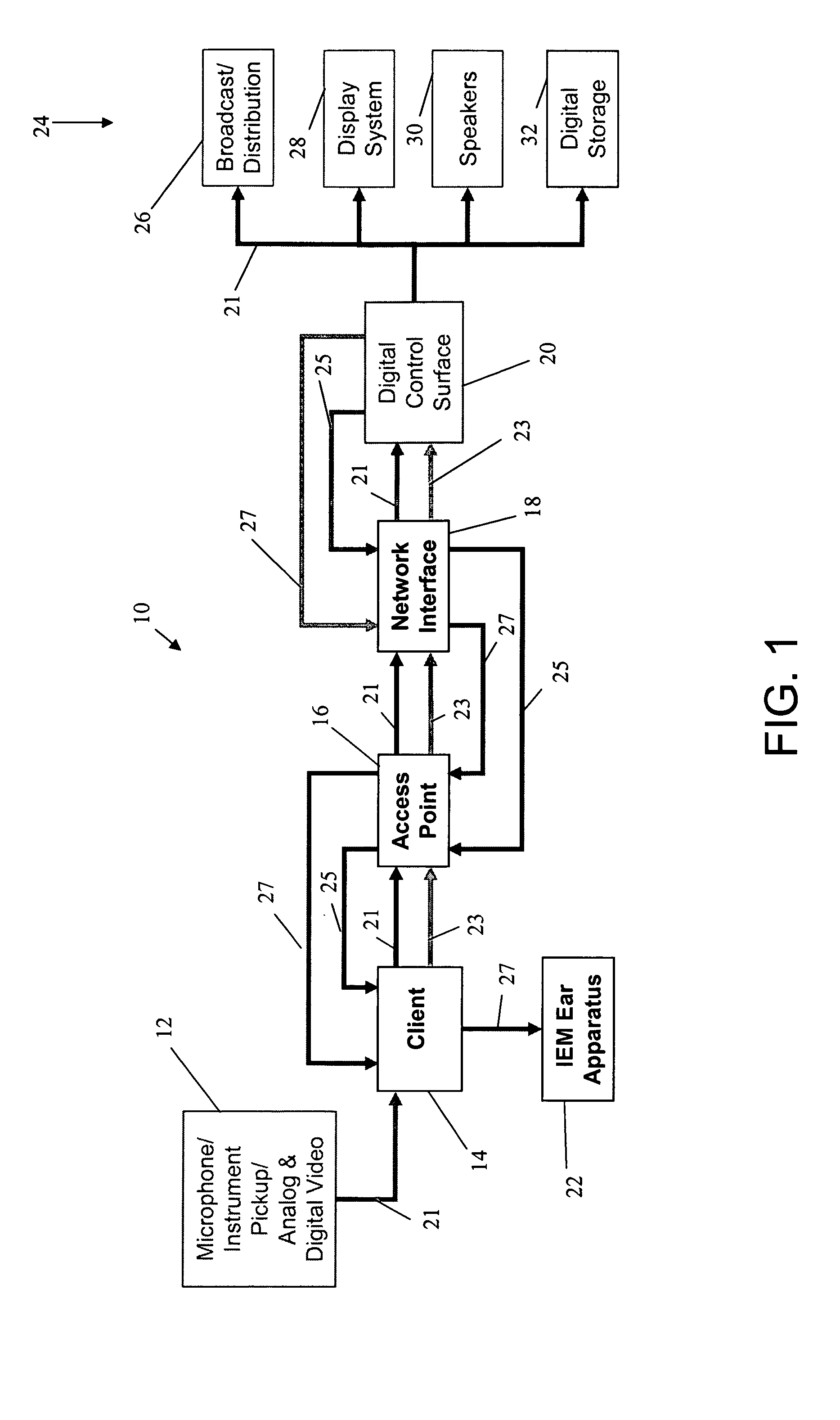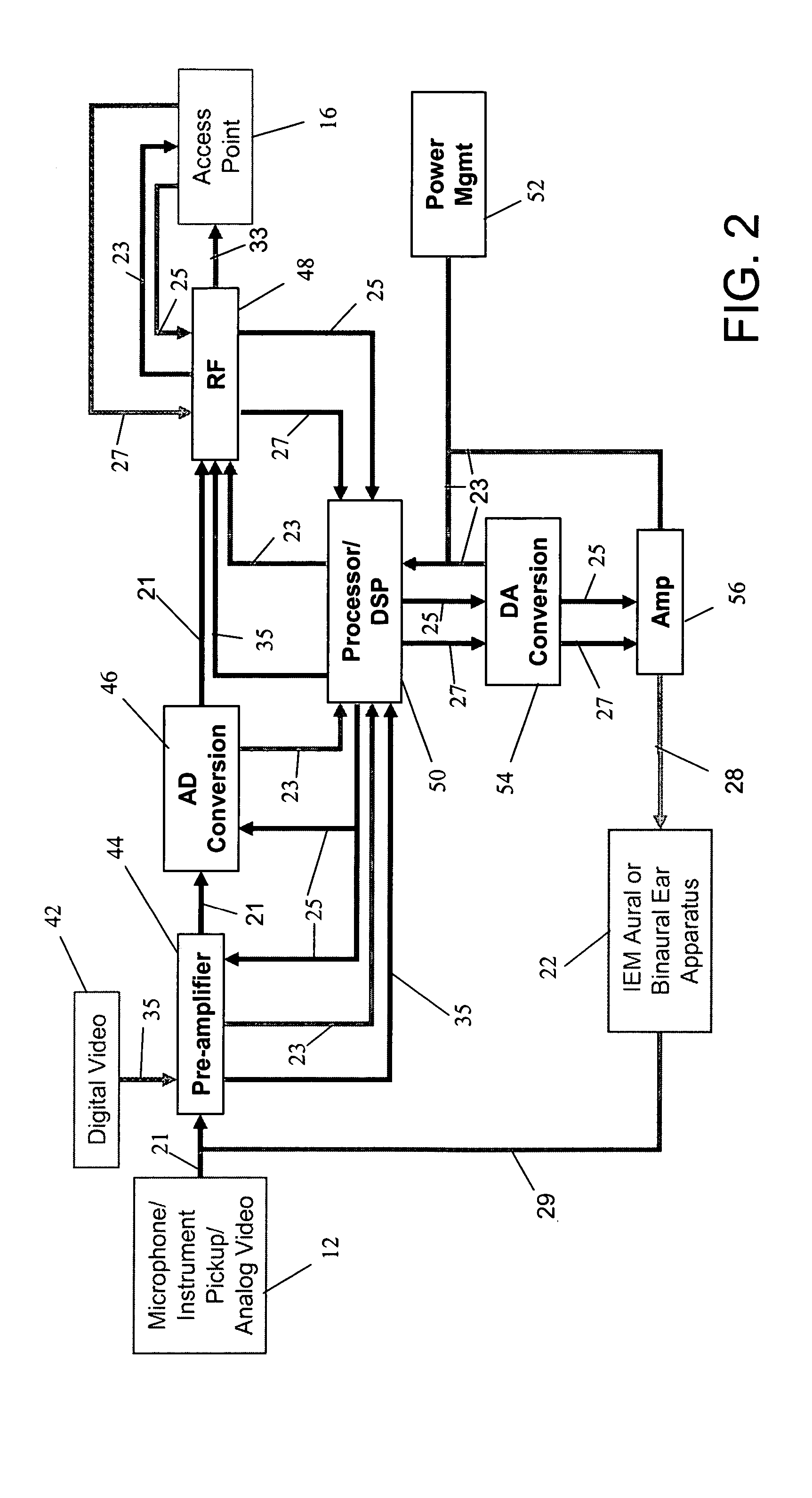Wireless communication system for media transmission, production, recording, reinforcement and monitoring in real-time
a communication system and wireless technology, applied in the field of wireless communication systems, can solve the problems of hindering the ability to effectively manage the system remotely, lan does not provide bi-directional communication between the transmitter and the receiver, and the wireless microphone system is limited to unidirectional transmission. , to achieve the effect of eliminating the subjectivity of locating, improving realism, efficiency and accuracy
- Summary
- Abstract
- Description
- Claims
- Application Information
AI Technical Summary
Benefits of technology
Problems solved by technology
Method used
Image
Examples
Embodiment Construction
[0030] In one embodiment, the present invention provides a digital wireless media system and a digital wireless IEM system eliminating the redundancy resulting from separate and independent wireless audio, visual and IEM systems while improving signal quality, system reliability, system management, and increasing functionality.
[0031] As shown in FIG. 1, the present invention can comprise a system 10 including, in one embodiment, an input device 12, a client 14, an access point 16, a network interface 18, a control surface 20, an IEM ear apparatus 22 and output elements 24. Input device 12 can be, for example, a microphone, an instrument pickup, a still camera, a video camera, and other known devices for receiving audio and visual data. Client 14 can be one or more transceivers in the form of a body pack or handheld transceiver, for example. Access point 16 can be a base station, for example, and ear apparatus can comprise earbuds or ear pieces as are commonly known in the art. In o...
PUM
 Login to View More
Login to View More Abstract
Description
Claims
Application Information
 Login to View More
Login to View More - R&D
- Intellectual Property
- Life Sciences
- Materials
- Tech Scout
- Unparalleled Data Quality
- Higher Quality Content
- 60% Fewer Hallucinations
Browse by: Latest US Patents, China's latest patents, Technical Efficacy Thesaurus, Application Domain, Technology Topic, Popular Technical Reports.
© 2025 PatSnap. All rights reserved.Legal|Privacy policy|Modern Slavery Act Transparency Statement|Sitemap|About US| Contact US: help@patsnap.com



